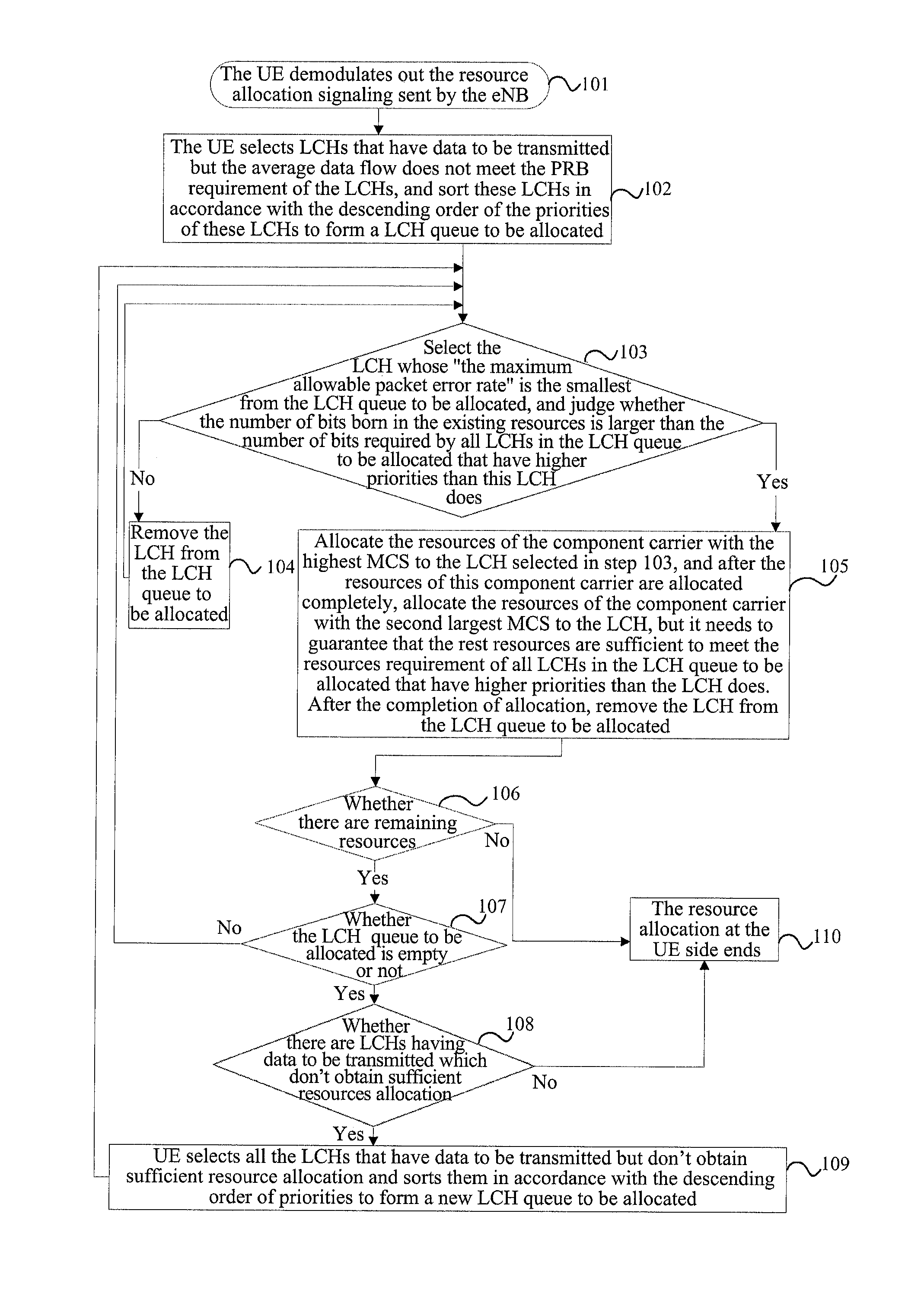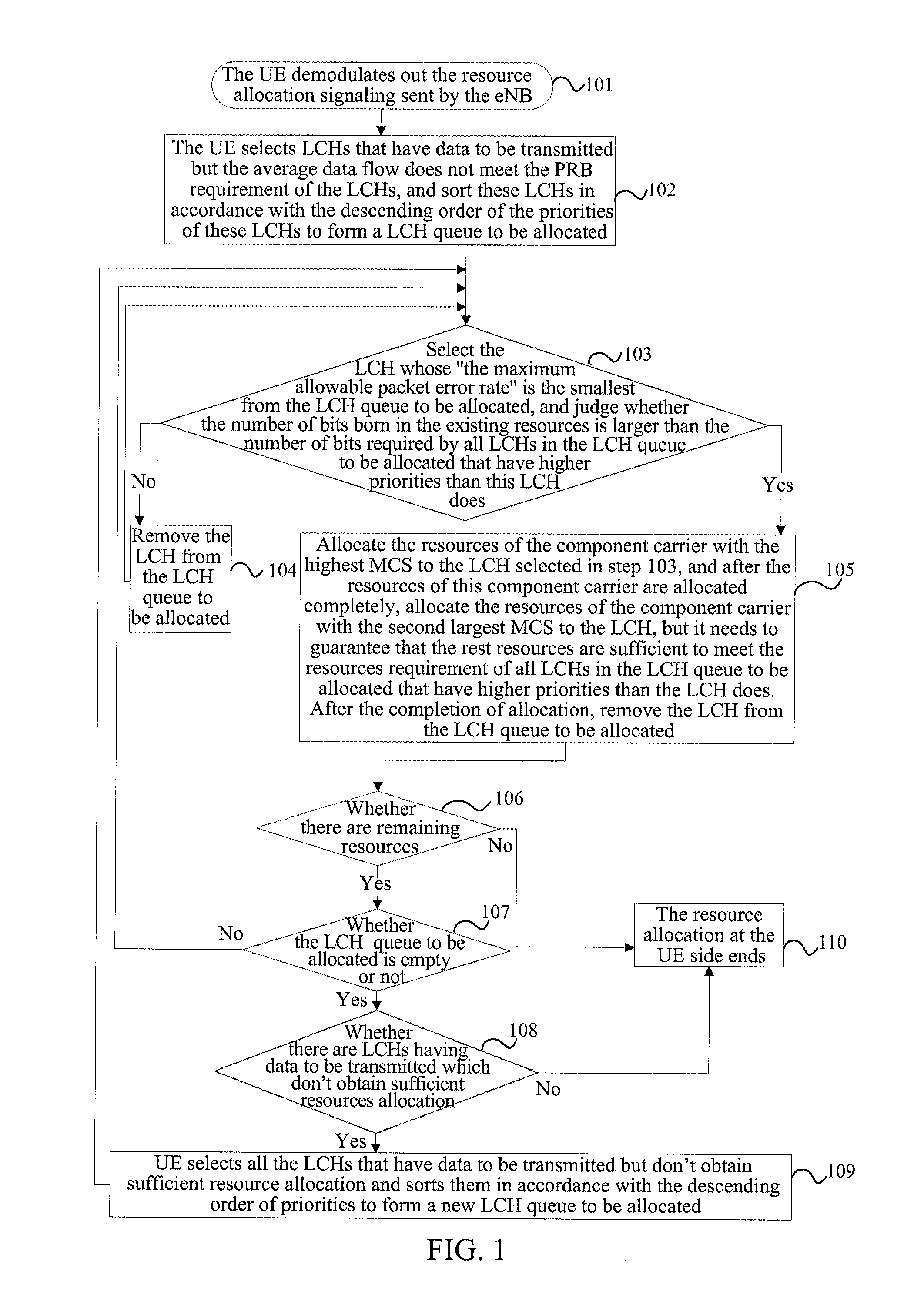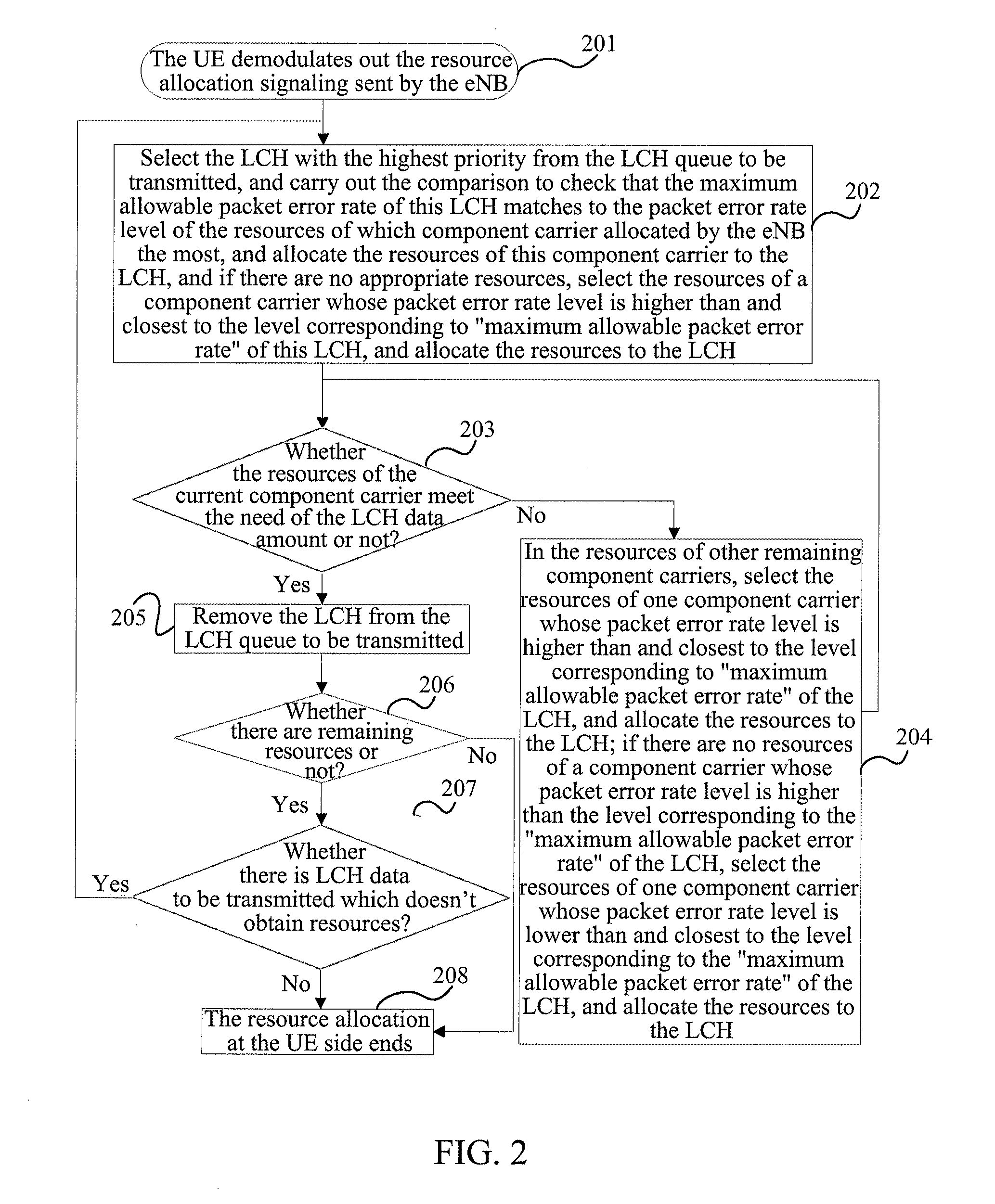Method and apparatus for scheduling uplink radio resources in radio communication system
- Summary
- Abstract
- Description
- Claims
- Application Information
AI Technical Summary
Benefits of technology
Problems solved by technology
Method used
Image
Examples
first example
The First Example
[0101]The eNB allocates radio resources to the UE according to the uplink channel quality information and the current logical channel information of the UE, and determines the control signaling information for the allocated radio resources, and notifies the control signaling information of the radio resources to the UE. The process of logical channel priority processing in the UE side is executed by the following steps:
[0102]allocate the radio resources in turn to a logical channel which has data to be transmitted and whose average data flow does not meet the prioritized bit rate (PRB) requirement of this logical channel according to the descending order of the priorities of the logical channels;
[0103]if there are remaining resources, the remaining resources are allocated in turn to logical channels having data to be transmitted according to the descending order of the priorities of the logical channels, and logical channels with the same priority have equal opportu...
second example
The Second Example
[0122]The eNB allocates radio resources to the UE according to the uplink channel quality information and the current logical channel information of the UE, and determines the control signaling information for the allocated radio resources, and notifies the control signaling information of the radio resources to the UE. If the control signaling information of the radio resources comprises the packet error rate / block error rate / bit error rate or level information thereof, the process of logical channel priority processing at the UE side is executed by the following steps:
[0123]allocate the radio resources in turn to logical channels which have data to be transmitted and whose average data flow does not meet the PRB requirements of these logical channels according to the descending order of the priorities of the logical channels;
[0124]when there are remaining resources, the remaining resources are allocated in turn to logical channels having data to be transmitted ac...
third example
The Third Example
[0151]The implementation method of this example is basically the same as that of the second example, and the control signaling information is still the packet error rate, the block error rate, the bit error rate and so on, and only the MCS is used to indicate the control signaling information, thus the control signaling overhead is further reduced. The specific implementation is as follows:
[0152]Setting the corresponding relationship table between the MCS level and the packet error rate, as shown in Table 2:
TABLE 2MCS levelPacket error rate levelCorresponding packet error rate range 0~104[1%, 2%)11~203[0.5%, 1%)21~242[0.1%, 0.5%)25~281[0.01%, 0.1%)29ReservedReserved30ReservedReserved31ReservedReserved
[0153]In Table 2, the MCS level range defined in the existing LTE standard is from 0 to 31 (see 3GPP TS36.213 Table 8.6.1-1), and refer to Table 2 to define the corresponding relationship between the MCS level and the packet error rate. The packet error rate range corre...
PUM
 Login to View More
Login to View More Abstract
Description
Claims
Application Information
 Login to View More
Login to View More - R&D
- Intellectual Property
- Life Sciences
- Materials
- Tech Scout
- Unparalleled Data Quality
- Higher Quality Content
- 60% Fewer Hallucinations
Browse by: Latest US Patents, China's latest patents, Technical Efficacy Thesaurus, Application Domain, Technology Topic, Popular Technical Reports.
© 2025 PatSnap. All rights reserved.Legal|Privacy policy|Modern Slavery Act Transparency Statement|Sitemap|About US| Contact US: help@patsnap.com



